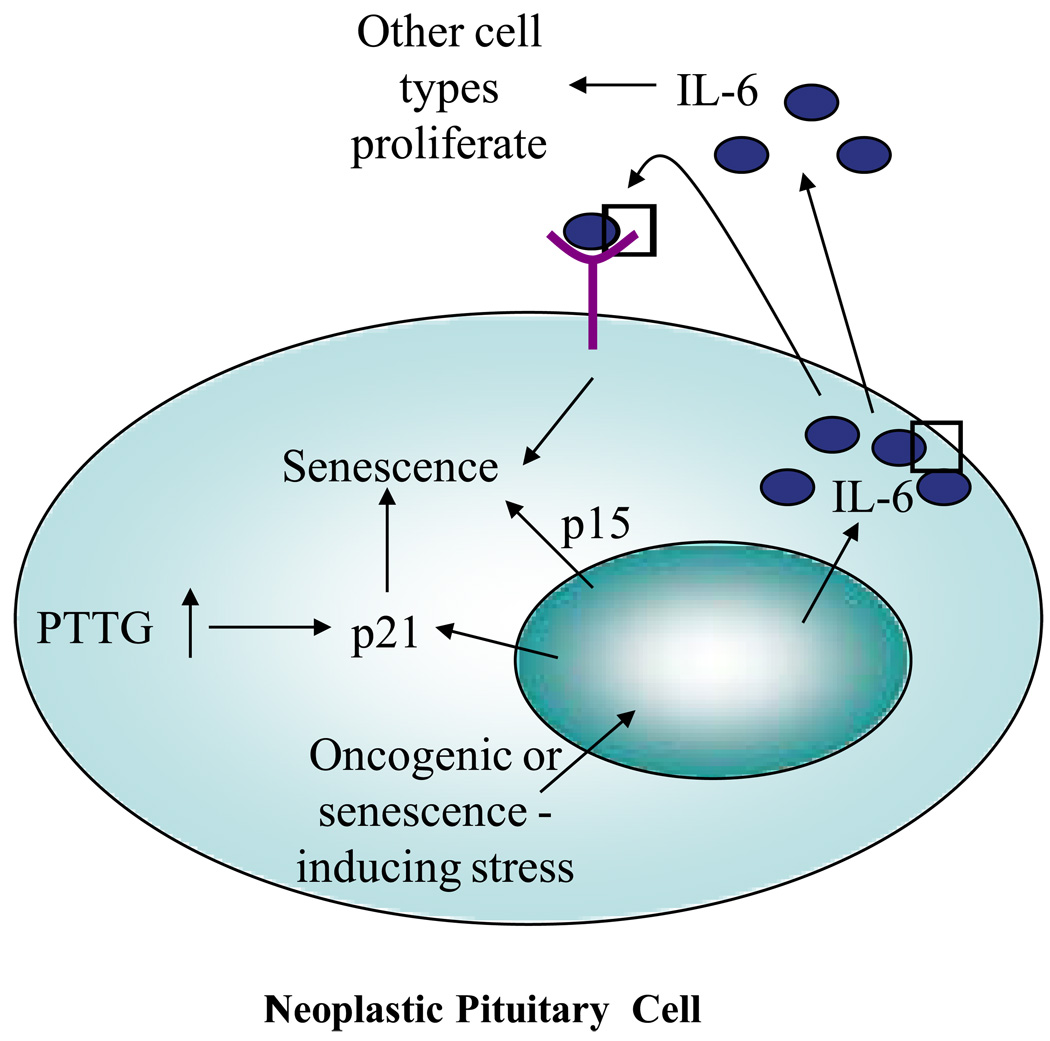Activated oncoproteins or loss of tumor suppressor proteins (oncogenic stress) trigger oncogene-induced cellular senescence (OIS). However, other factors may affect pituitary tumors so as to induce OIS. In Kuilman et al.’s model (2) in melanocytic nevi, when OIS occurs there is an upregulation of p15INK4B, p16INK4A, p21CIP and CDK inhibitors. IL-6 is also upregulated in OIS and the IL-6/IL6-R pathway is essential for mediating OIS, inducing and maintaining senescence in an autocrine fashion, but acting pro-mitogenically in a paracrine fashion. Since IL-6 also regulates normal and tumoral pituitary cell growth, this process may also occur in incipient neoplastic pituitary cells. In Kuilman’s findings, p15INK4B was upregulated and its induction linked to IL-6 and CEBP/β, indicating regulation by oncogenic stress. Deranged intracellular PTTG levels, results in pituitary-specific senescent features, including increased p21 levels and elevated senescence-associated β-galactosidase expression.

An official website of the United States government
Here's how you know
Official websites use .gov
A
.gov website belongs to an official
government organization in the United States.
Secure .gov websites use HTTPS
A lock (
) or https:// means you've safely
connected to the .gov website. Share sensitive
information only on official, secure websites.
